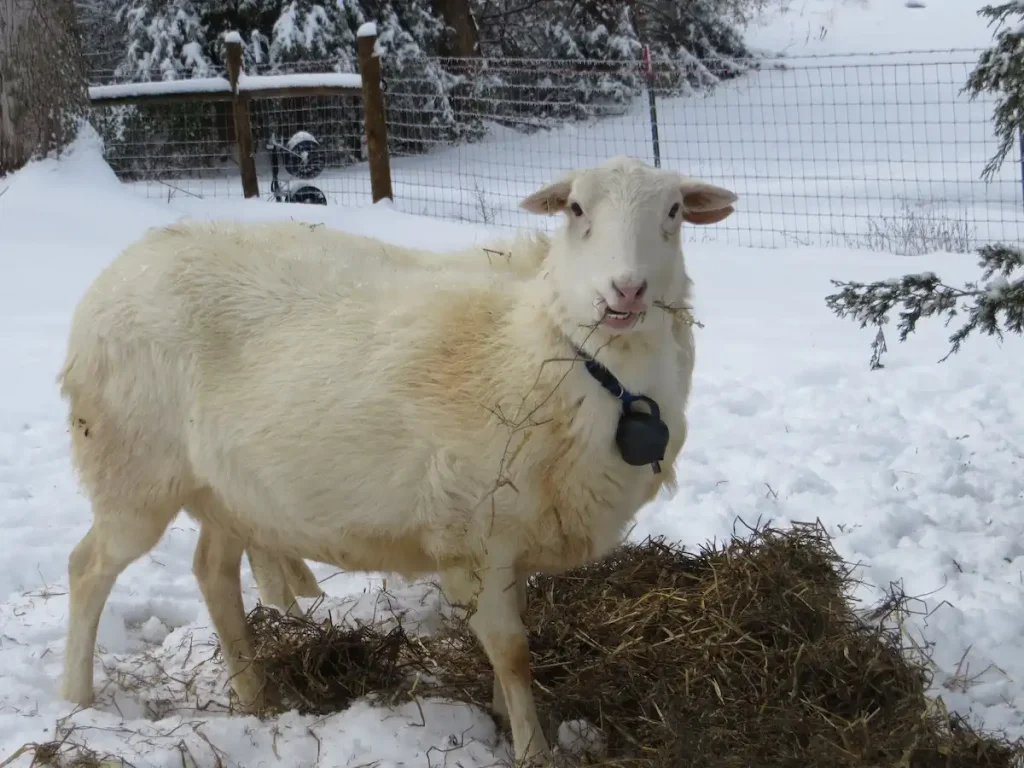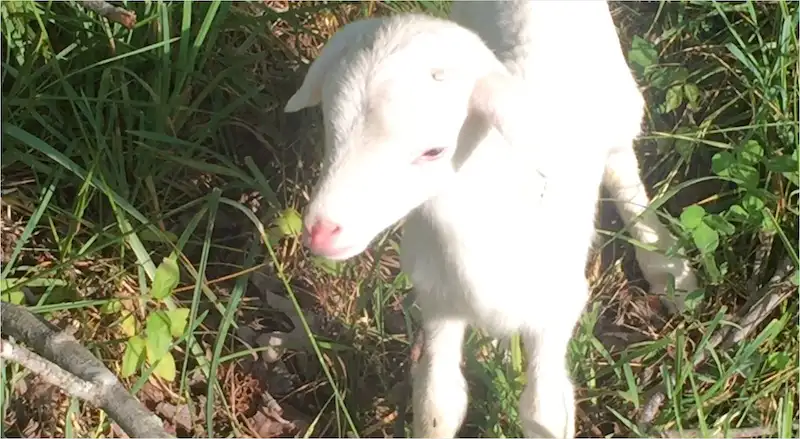We believe that our creator placed an intelligent design in and throughout nature. Therefore, we seek to discover and cooperate with this original design in everything we grow on our farm. The result of such harmonious growth is a restoration of health: in soils, pastures, animals, and people.
Towards that end we DON’T use:
Our sheep are primarily grass-fed on green pastures, not filthy feedlots. We do give our sheep a little grain treat now and then to keep them eager to follow us wherever we want them to go.
We supplement pasture feeding with the best minerals on the planet: Icelandic kelp. It’s expensive but worth every penny.

The supreme agricultural tragedy in the United States is industrial farming practices that deplete the soil of life-giving minerals. Mineral soil depletion leads to unhealthy pastures and sick sheep.
A common shepherding practice is to prepare a hypodermic needle with the micronutrient selenium to inject into a newborn lamb. Otherwise, the lamb may not survive.
We find this practice bizarre. Why not be proactive and feed pregnant ewes kelp from the sea with a perfect balance of all 90 minerals, including selenium? In Finland, it is against the law for a farmer to spread a fertilizer that doesn’t contain selenium. Why? It’s done to prevent cancer. Dr. Maynard Murry, a physician and research scientist, discovered that sea-minerals-enriched-food was a powerful way to prevent degenerative diseases, especially cancer.

Good Shepherd Heritage Farm is excited to use sea-agriculture to raise healthy sheep.
Our farm philosophy follows the insights of Restorative Agriculture. A key practice in restorative agriculture is to use rotational grazing by dividing our farm into different pastures, or paddocks. We then rotate our sheep through the pastures giving each paddock time to restore its vitality after grazing activity. As incredible as it may seem, practicing rotational grazing and eliminating reliance on toxic chemicals, gradually restores the structure, nutrient level, and carbon sequestering ability of the soil.


Greenville, South Carolina
© 2023 Good Shepherd Heritage Farm | Site by Upstate SC Web Design